“It's as if our lives just came to an end”. The city of Izium is coming to life after Russian occupation
The destroyed buildings are just one of the problems faced by Izium, a city in Kharkiv Oblast that was under Russian occupation from March to September 2022. But despite the losses, psychological traumas and complex interpersonal relationships, the city is gradually returning to life and beginning to reevaluate the horrors it endured. The window of a cafe on Soborna Street is firmly boarded up with wooden planks.
However, for Izium, which Ukraine's Armed Forces liberated in September 2022, this is a sign that a new place is being opened, rather than being repaired or closed. A pink-coloured smiley is painted on the wooden planks and the Ukrainian flag hangs near the entrance. Tables and chairs line the street outside.
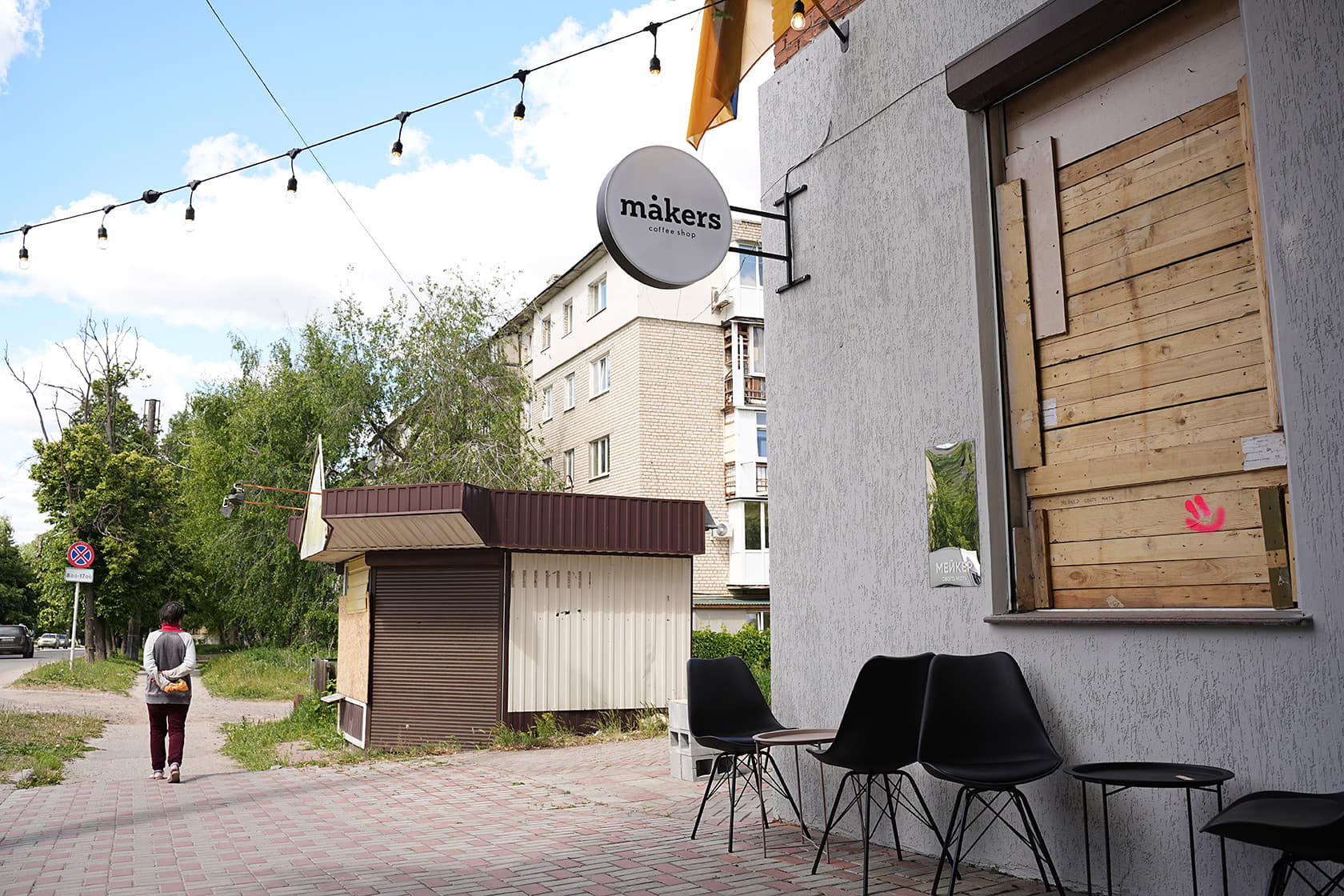 Makers cafe in IziumAll photos: Yevhen Hertner
Makers cafe in IziumAll photos: Yevhen Hertner
Makers coffee shop, which also operates in Kharkiv, opened in trial mode in Izium on 11 May 2024.
The day before, Russian forces launched their offensive operation in Kharkiv Oblast, causing a new wave of displacement and sorrow.
Advertisement:"It frightens us, but we must fight our fears," says 17-year-old Oksana, a barista at Makers. She diligently notes down the names of each drink ordered by customers in her notebook: iced matcha latte, a coffee and orange juice drink, espresso tonic, and other even more unusual offers, checking their prices.
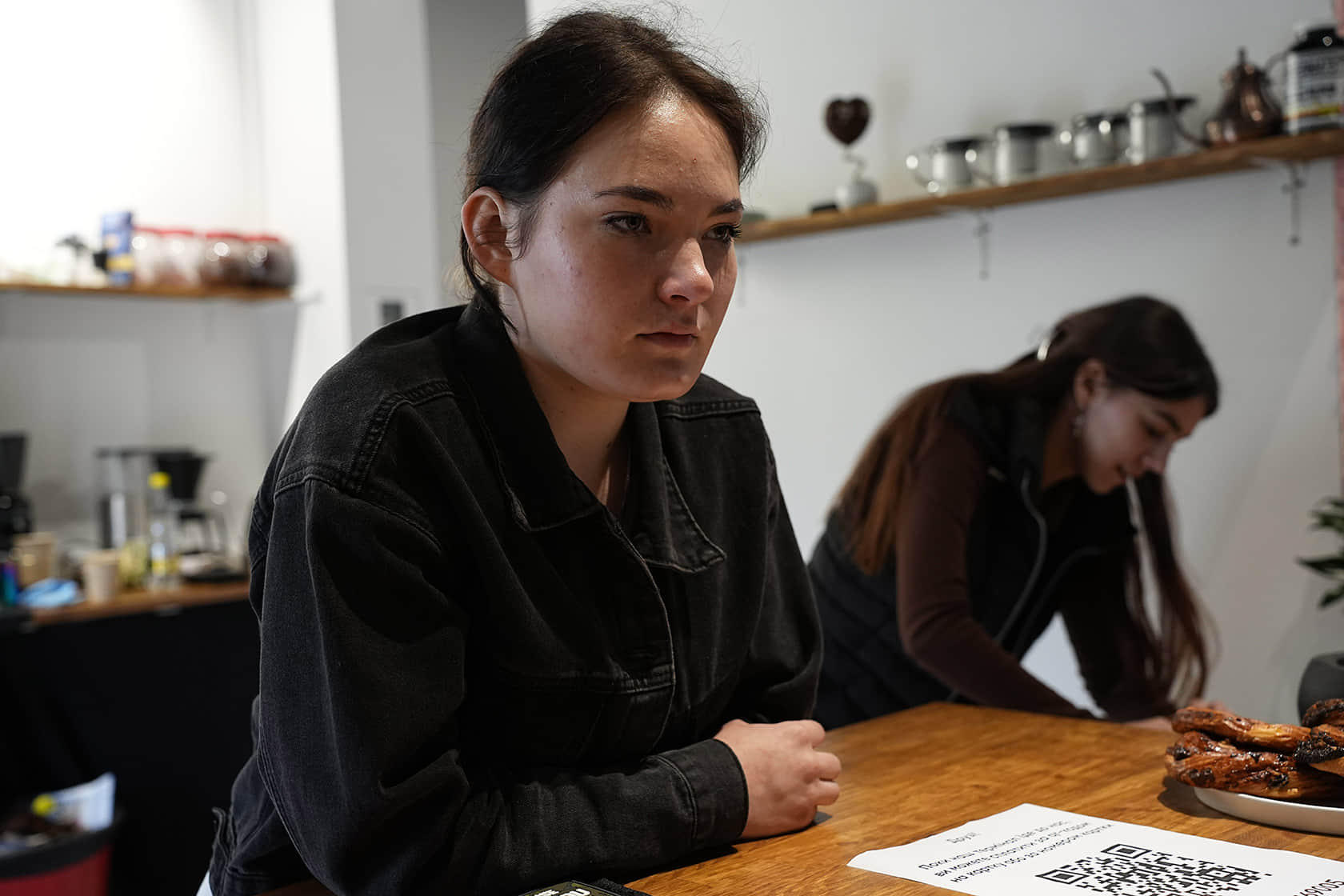 Oksana, a barista at the cafe Makers in Izium
Oksana, a barista at the cafe Makers in Izium
The situation is relatively quiet in Izium. The most active fighting is unfolding in Vovchansk, just 5 km from the border with Russia and 170 km from here.
Meanwhile, there are daily Russian attacks on Kharkiv, which is a two-hour drive from Izium. Kharkiv residents gather various items for Izium's Makers cafe with the help of Instagram. Houseplants, vinyl records, board games and a projector for movie screenings.
Izium's cinema has been closed for over two years, and it is far from alone, with 80% of the city's buildings having been destroyed or damaged in 2022. A drawing by the famous Kharkiv street artist Hamlet Zinkovskyi has recently appeared on one of the walls of the new cafe. "Where are you? In reality" is written on the wall.
Advertisement:The reality in Izium is harsh and painful, while the experience of occupation was tragic.
There are 250 high-rise buildings in the city, all of which were severely damaged by attacks two years ago. Some of them are completely destroyed. To take just one example, the Russian military launched an airstrike on the apartment block at 2 Pershotravneva Street on 9 March 2022, killing at least 44 people.
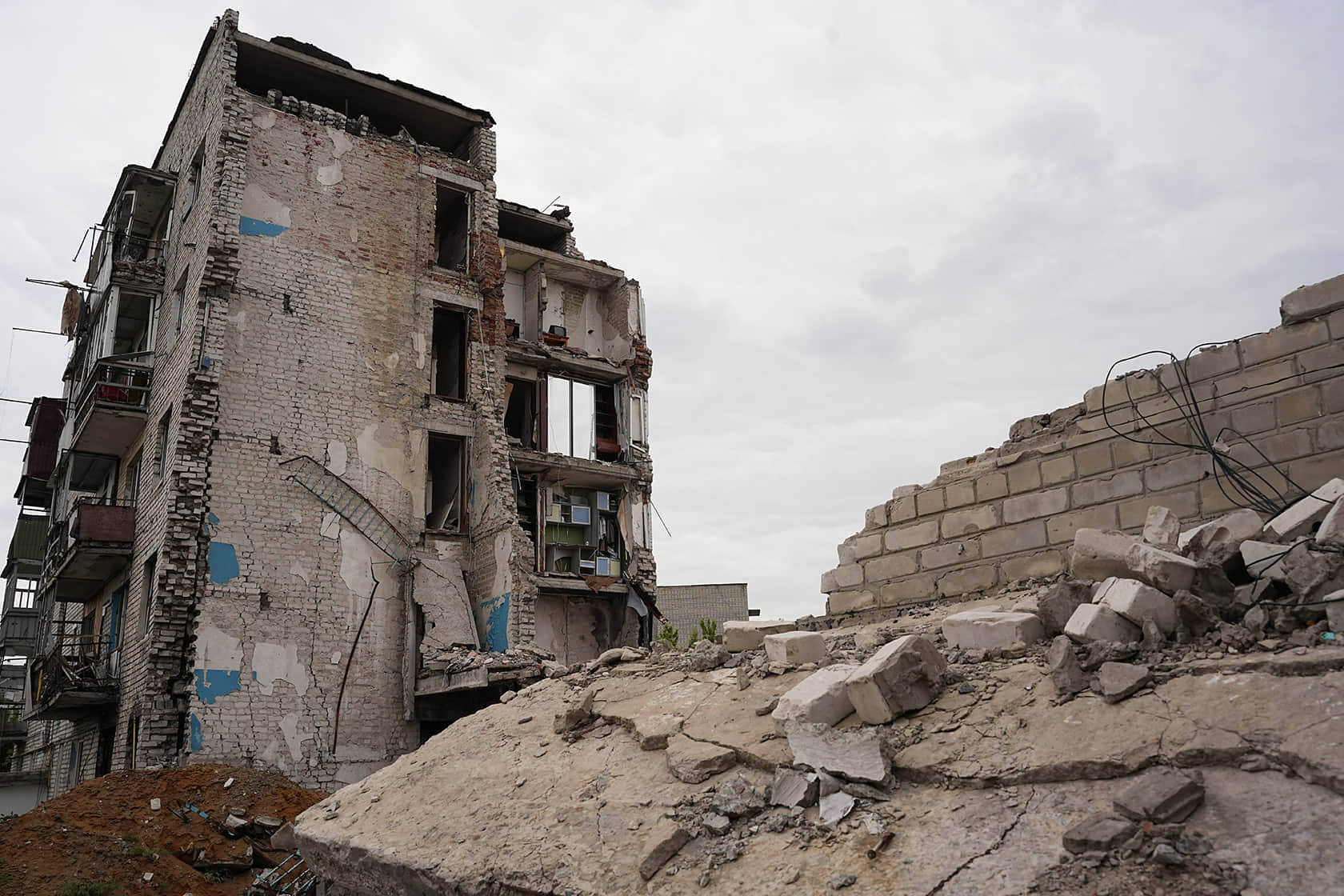 No.
No.
2 Pamiati (formerly Pershotravneva) Street in Izium
After the city was liberated, Pershotravneva Street (a Soviet-era name meaning the First of May Street) was renamed Pamiati Street (Street of Memory). Portraits of the deceased, candles, wreaths, artificial flowers and toys are still there, in the courtyard near the ruined entrances. It's deserted and silent here.
Following Izium's liberation, Ukrainian law enforcement discovered a mass grave in the nearby forest, from which 451 bodies were exhumed. Many bore signs of violent death and torture. DNA analysis confirmed that writer Volodymyr Vakulenko was buried in grave No.
319. He was kidnapped and shot by Russian occupiers. A woman whose mother was buried in grave No.
299 lives in a village near Izium. The 84-year-old pensioner passed away on 7 May 2022. She died in her home in Izium from illness and old age.
Initially, her daughter didn't know about the exhumation after the liberation as the village had no electricity or mobile phone service for a long time. She immediately went to Izium to take DNA samples as soon as she found out. Meanwhile, her mother's body had been transferred from the forest in Izium to the morgue in Kharkiv.
The identification process was prolonged as DNA samples had to be submitted twice. The mother's burial took place almost a year after her death, on 24 April 2023. "Occupation brings horror.
It's as if our lives just came to an end," says the daughter. She's frightened by the current Russian army advance and, in common with many other Kharkiv Oblast residents, fears another occupation. She therefore asks us not to publish her name or even the name of the village where we spoke.
She explains that for many people, occupation means death.
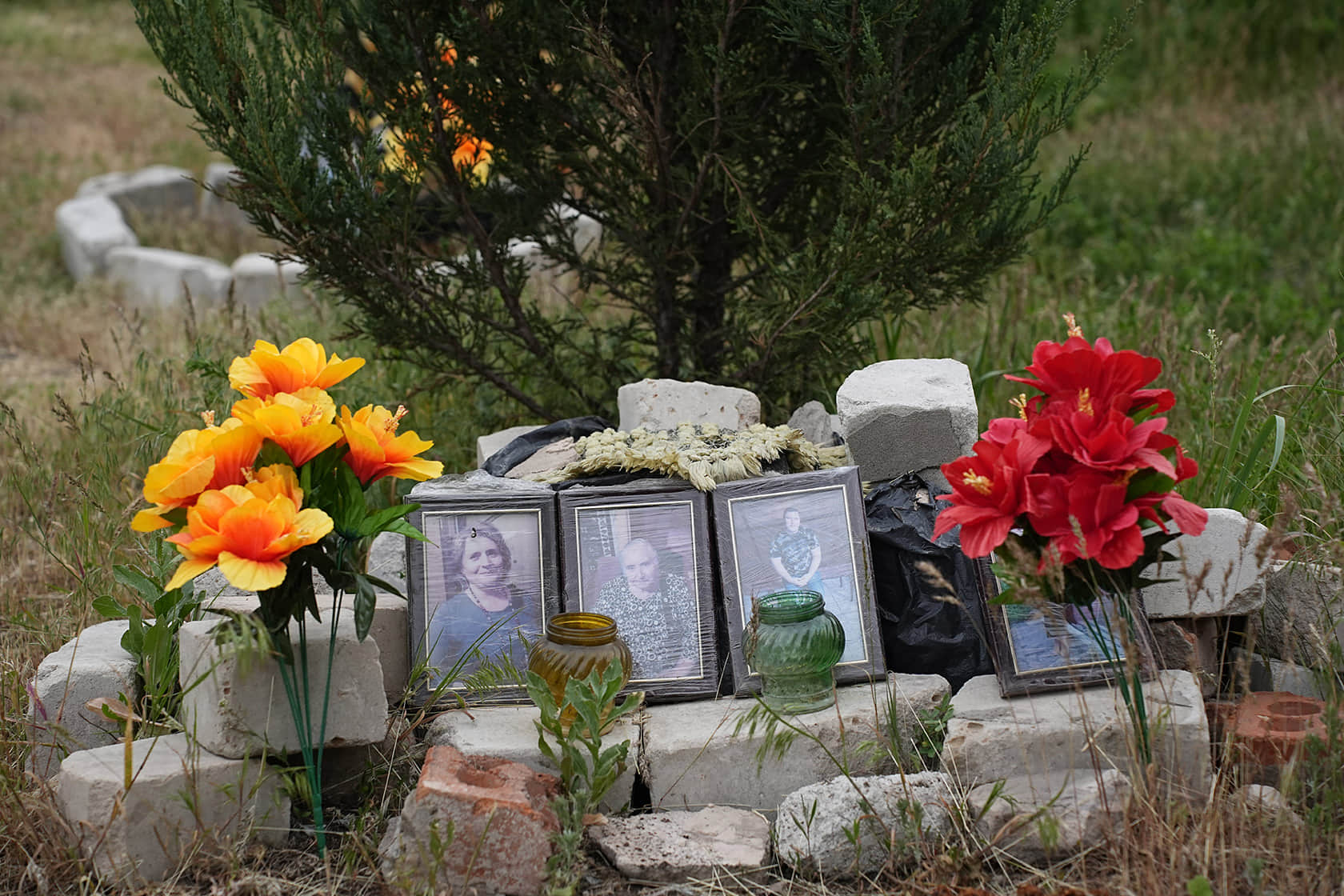 Portraits of the residents of the building on Izium's Pamiati Street who were killed by the airstrike
Portraits of the residents of the building on Izium's Pamiati Street who were killed by the airstrike
Post-occupation problems
Around 50,000 people lived in Izium before 24 February 2022. After the beginning of Russia's full-scale invasion of Ukraine, people fled the city to escape attacks, overcoming numerous obstacles and risking their lives. Only 14,000 people remained in Izium during the occupation.
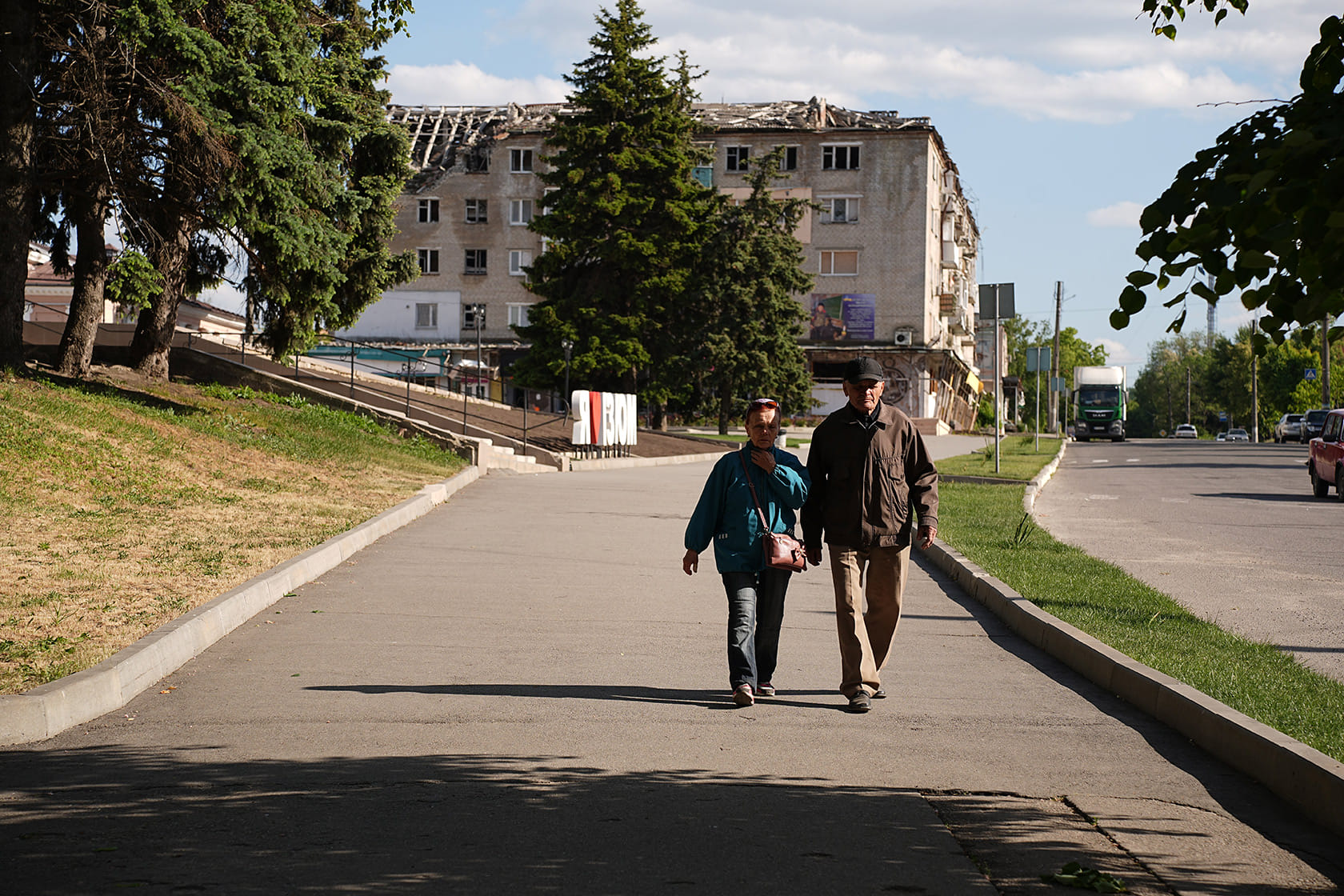 The centre of Izium now
The centre of Izium now
Maksym Strelnyk, Deputy Head of the Izium Military Administration, says that people began to return home from 10 September 2022, when Ukraine's Armed Forces liberated Izium.
He himself was one of those who returned. Initially, the biggest challenge for the liberated city was the humanitarian crisis and the lack of food, followed by the winter heating season, which they managed to get through despite the city's infrastructure having been almost completely destroyed. Now, around 25,000 people live in Izium.
Strelnyk explains that the other half of the city's residents have not returned, not so much because they fear the war is ongoing but rather because their homes have been destroyed.
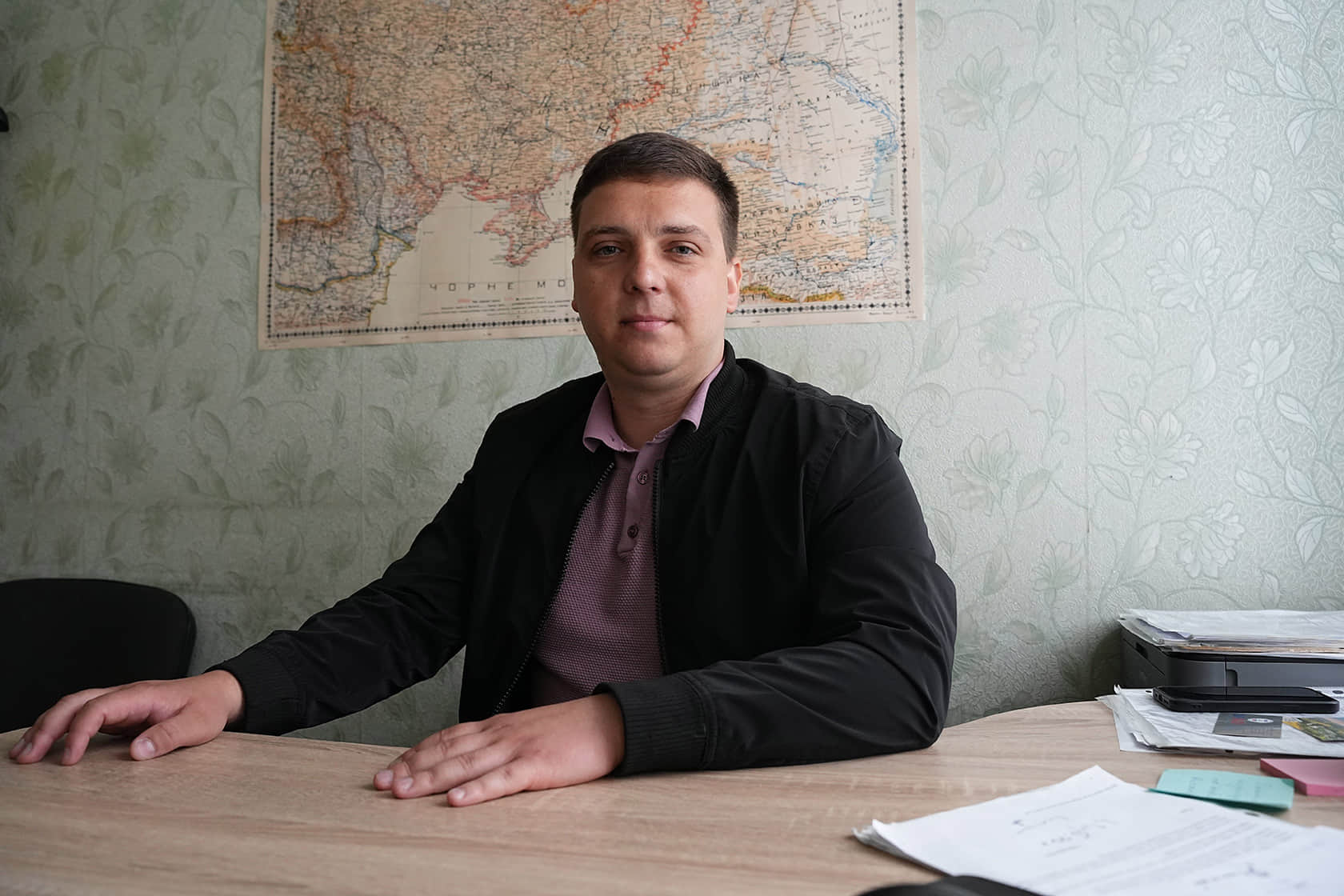 Maksym Strelnyk, Deputy Head of Izium City Military Administration
Maksym Strelnyk, Deputy Head of Izium City Military Administration
While the impact of the destruction is huge, the city did receive some aid. Maksym says 2,000 residents have received money for repairing damaged property, while another 300 people have been issued certificates to purchase new housing under the eRecovery programme. The certificates were mainly given to residents of destroyed private-sector buildings rather than high-rise buildings requiring significant repairs.
These blocks of flats will be restored under a different programme.
Advertisement:With damaged and burned-out residential buildings all around, other re-building projects in the city, such as the renovation of the city hall building in the centre conducted as part of a targeted international programme, have given rise to resentment among some locals.
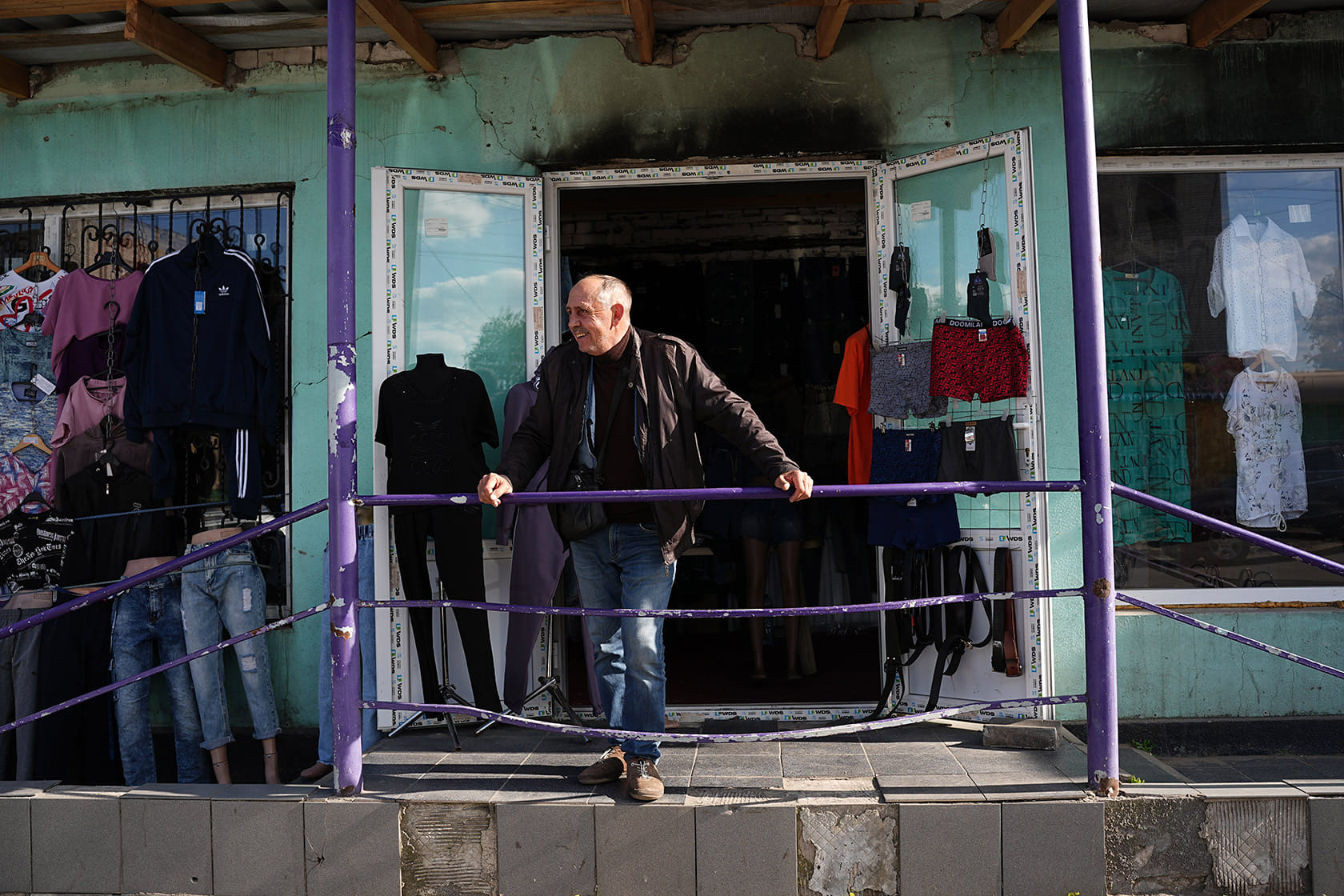 Burnt housing in Izium
Burnt housing in Izium
Municipal services, government institutions, humanitarian organisations, markets, shops, army surplus stores and a gym are all operating in Izium. The library has also reopened. On its windows, covered with plywood panels, a message to passersby reads: "The future world depends on the imagination of those who are now learning to read."
Halyna, who works for a municipal authority, admits that it's still difficult to enjoy life - there's destruction wherever you look. It can be quite depressing, she says. But last year, when the fountain in the Izium park was restored, she felt genuinely happy. "I spent 10 minutes just circling around it - I just couldn't get enough of it," Halyna recalls.
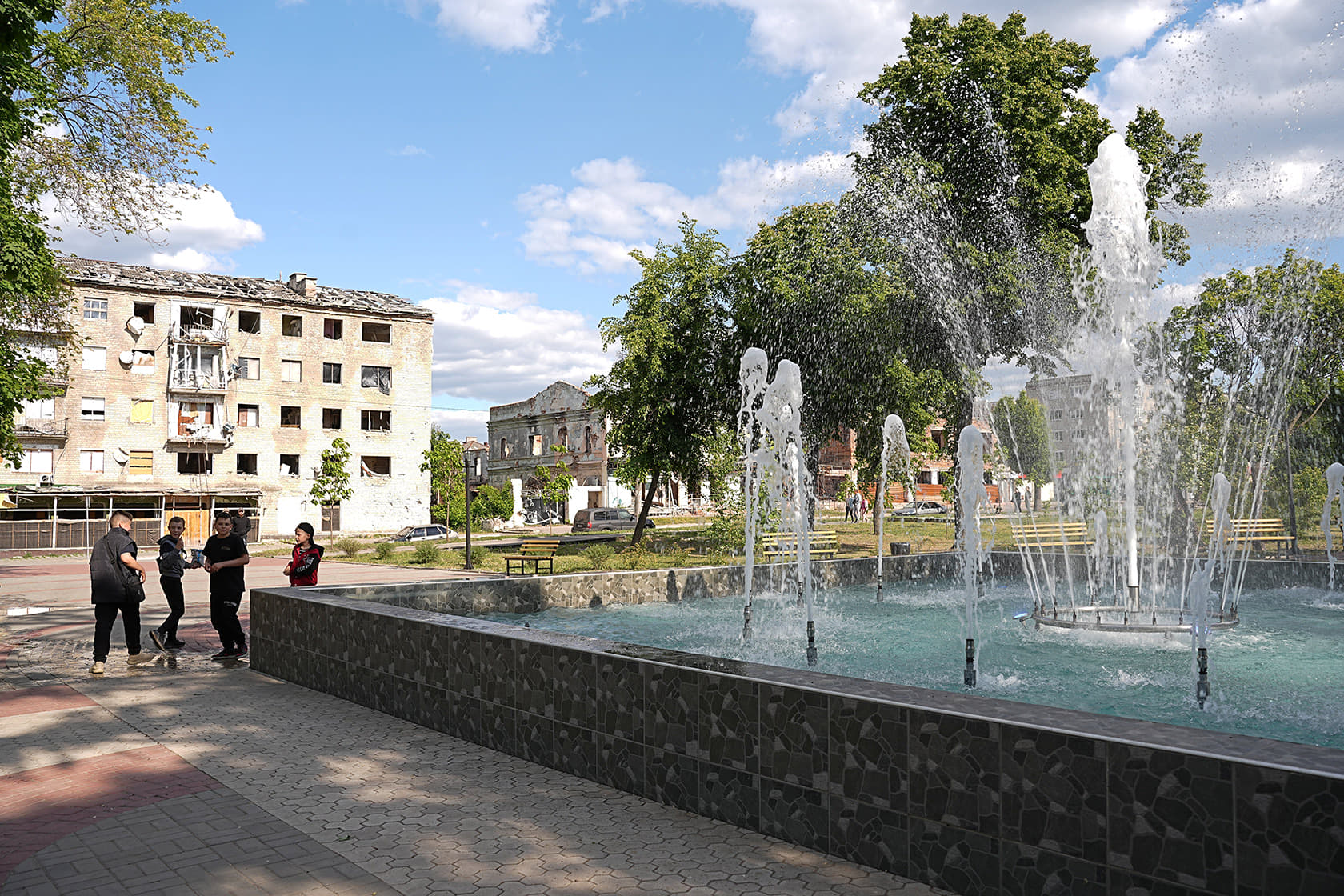 The fountain in the Izium park
The fountain in the Izium park
There are children playing and running around the fountain now; locals are walking their dogs or resting on benches.
However, schools and nurseries in Izium are still closed - it is too risky to reopen them. Just in March 2024, Russian Shahed drones struck a local school, destroying the building.
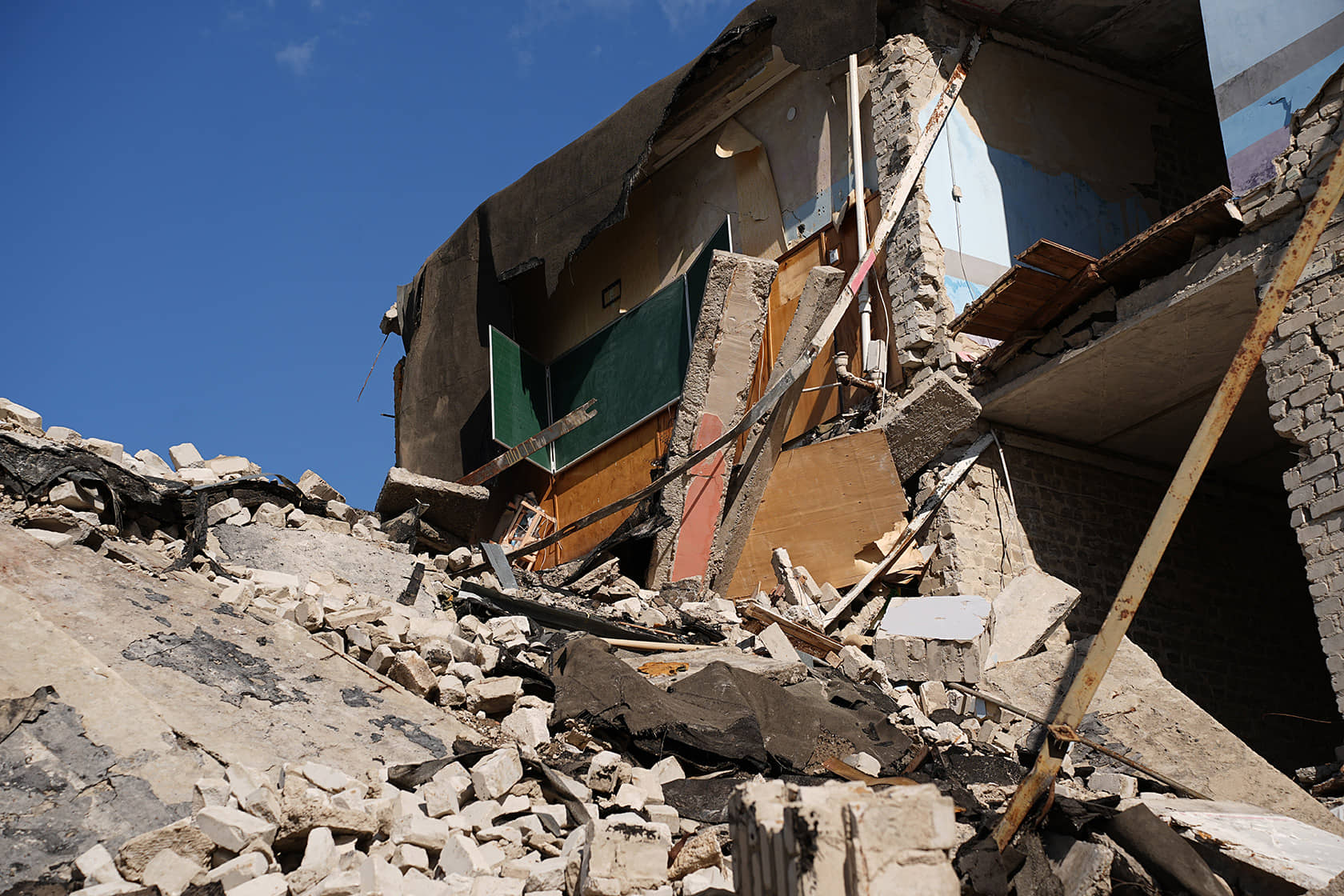 The school damaged by Russian Shahed drones
The school damaged by Russian Shahed drones
Most Izium residents today are over 60. Younger people are reluctant to go back, even though there are jobs here: the local city administration has several unfilled positions, and municipal services are also looking for people to join their teams.
But there are no people to fill those positions. They left, and they haven't come back. The Izium Instrument Making Plant, damaged by shelling and raided by looters, has never resumed its operations.
Many of its former employees have left Izium. Halyna says that the older people who remain can be awkward and fractious. Some of them still believe that Russian canned meat tastes better than whatever they get in Ukrainian humanitarian packages, even though both Ukrainian and international foundations flooded the city with aid after its liberation, Halyna says.
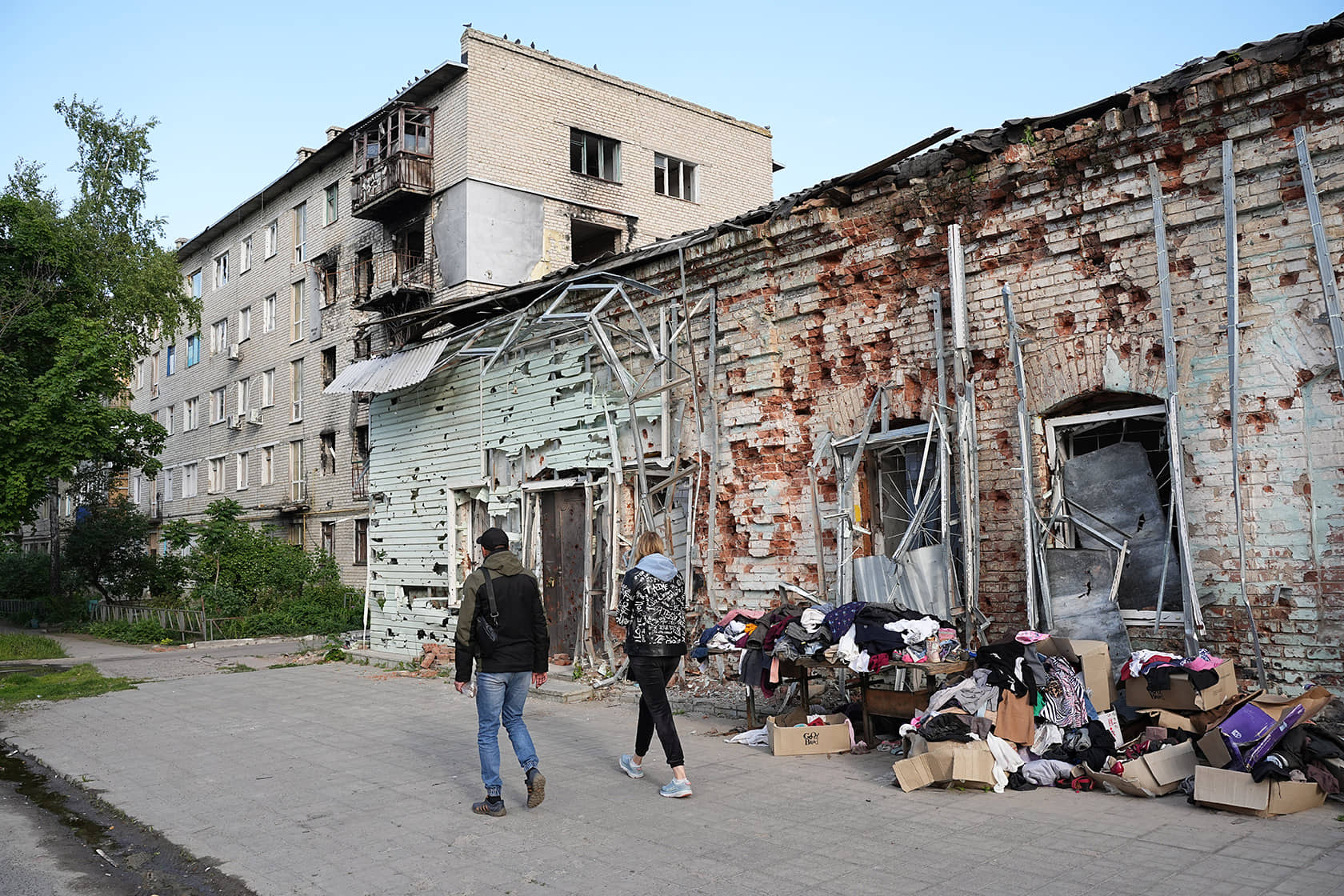 The streets of Izium
The streets of Izium
The tension between those who stayed in Izium under Russian occupation and those who left the city but have since returned is gradually subsiding, but it's still there, says Volodymyr Zelenskyi, an activist from Izium who shares his last name with the Ukrainian president.
In 2022, Zelenskyi helped Izium residents evacuate. Now he's involved in humanitarian aid and other efforts to meet Izium residents' needs.
Advertisement:Some of those who stayed in Izium during the occupation are still angry at those who left, accusing them of fleeing and abandoning the city. Those who left during the occupation and returned after the liberation, on the other hand, often see those who remained in the city as collaborators and Russian supporters.
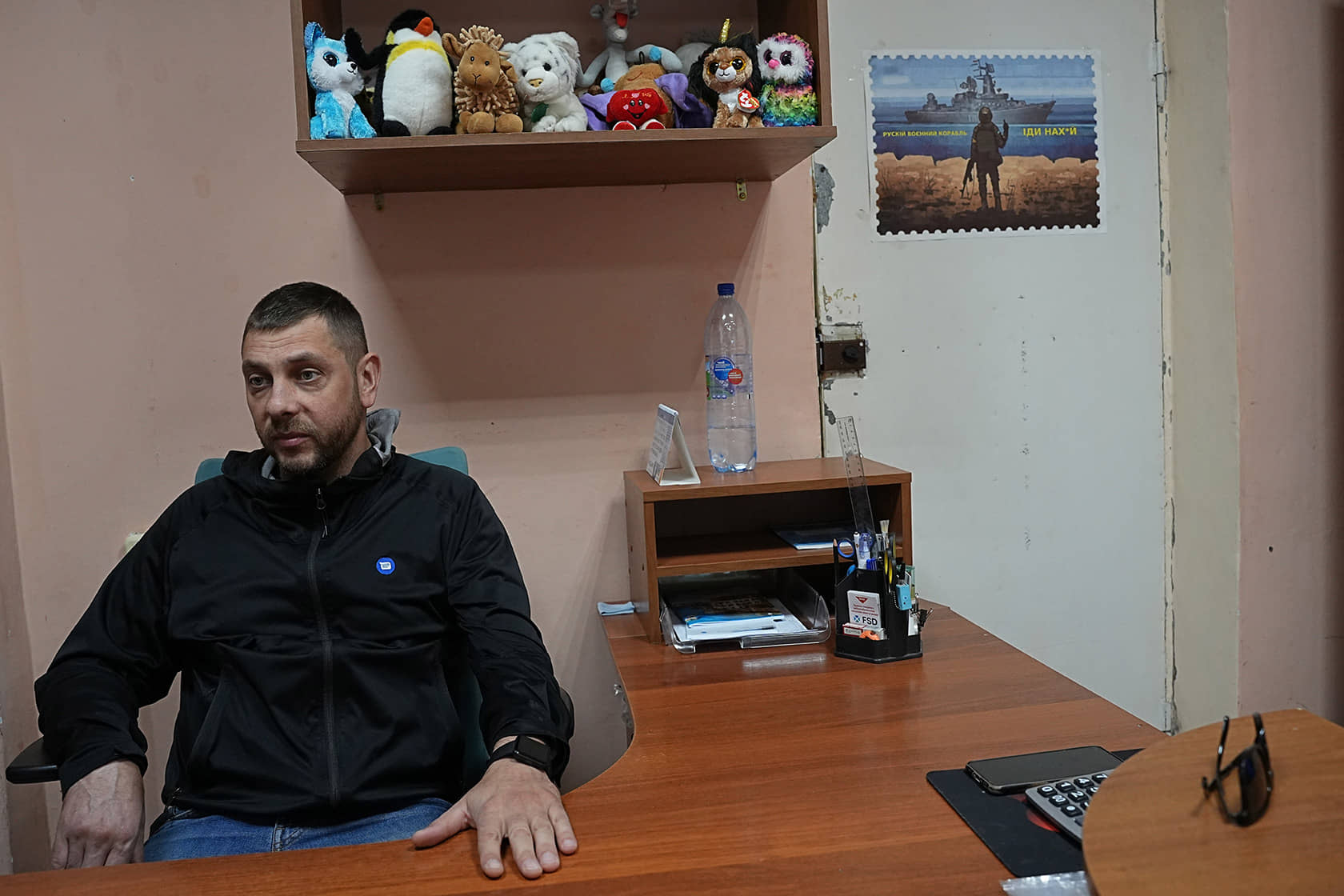 Volodymyr Zelenskyi, an activist from Izium
Volodymyr Zelenskyi, an activist from Izium
There is another group, says Strelnyk: Izium natives who now live abroad..
They have their own understanding of the situation, which differs from that of the people who live in Izium now. "Reconciliation is a serious challenge, which we will all have to keep working on for a long time", Strelnyk admits. Liudmyla Borova, 70, was in Izium during the Russian occupation, and she has an unequivocal view of Russia. "I hate Russia. How can you think well of an enemy?" Borova replies when asked about her view of Russia.
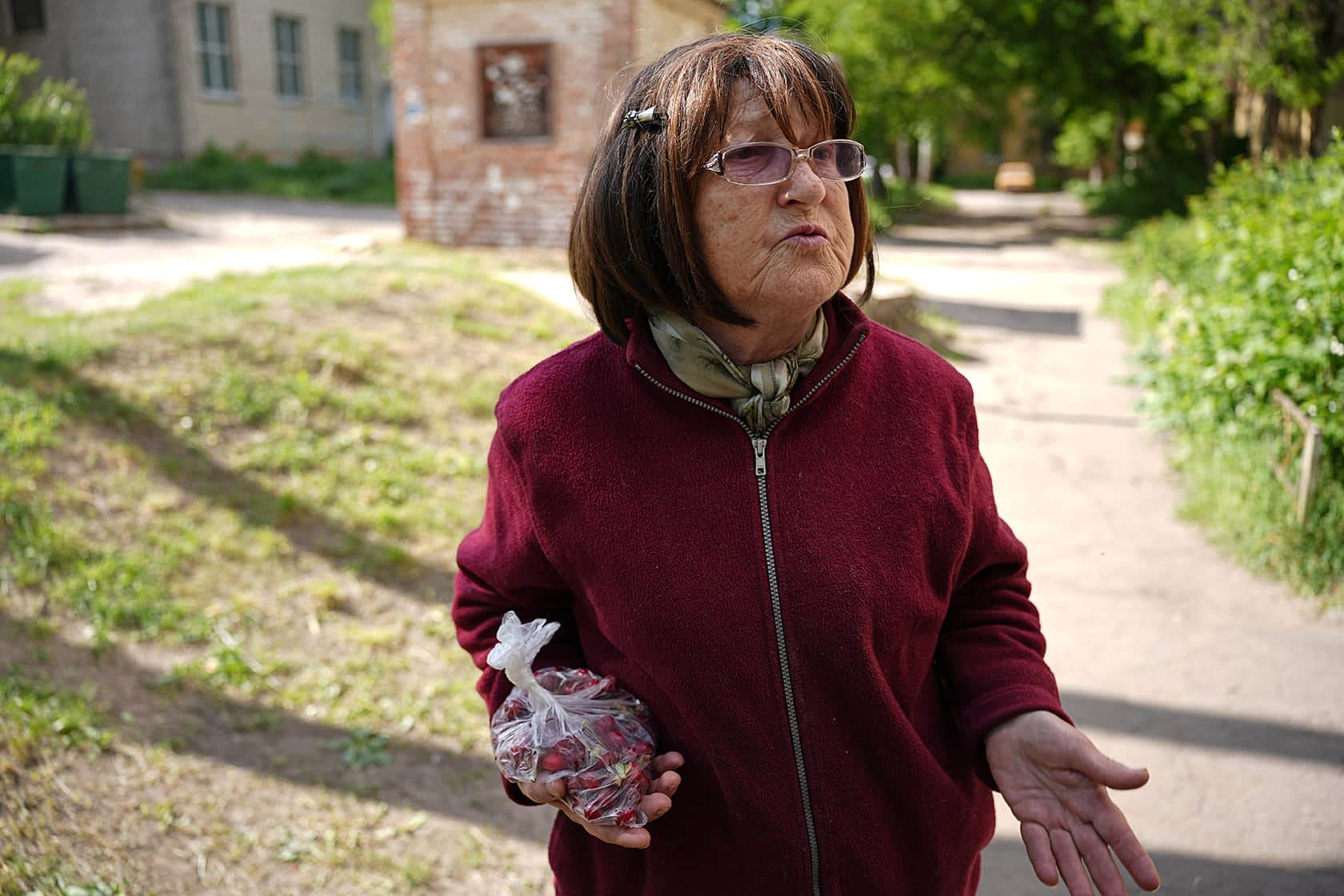 Liudmyla Borova, an Izium resident who lived through the Russian occupation
Liudmyla Borova, an Izium resident who lived through the Russian occupation
Borova says she is glad to talk to the many Ukrainian soldiers in Izium. "Yesterday I met a woman in a shop who serves in the military.
I told her I hoped she would stay alive and well," she says proudly. Military personnel agree: they say that for the most part, they're treated well here.
Life resumes in Izium
Late last year, a local newspaper called Obrii Iziumshchyny (Izium Horizons) shared an appeal - in print and on social media - urging local residents to bring items that could form the basis of a Museum of the Occupation. Anastasiia Harahulia, a journalist, says that the word "museum" doesn't mean it's going to be a formal establishment; it's just a convenient shorthand.
It took Izium residents a while to respond to the newspaper's call for artefacts, but gradually the items started trickling in.
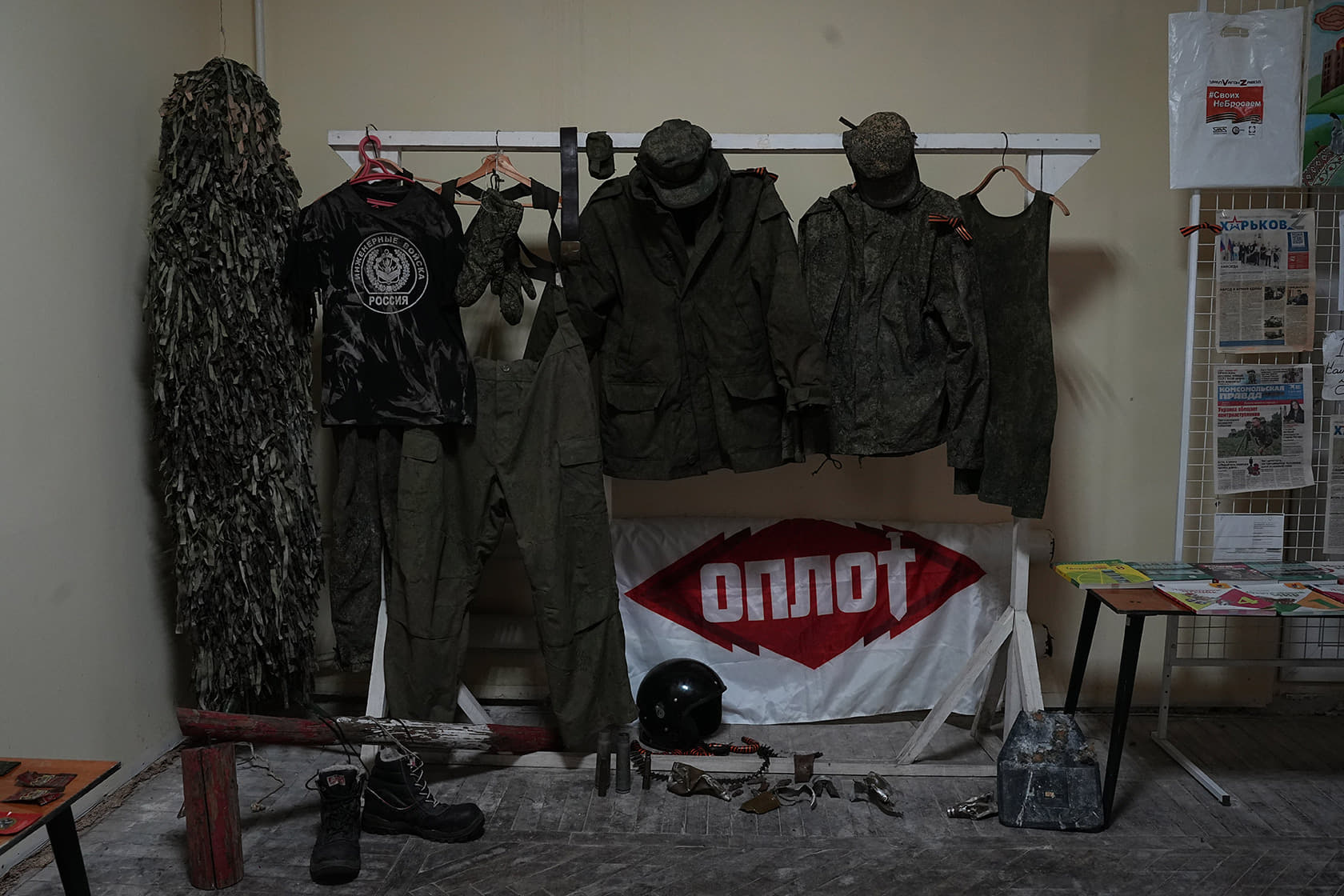 Izium's Museum of the Occupation
Izium's Museum of the Occupation
"Some people bring things because they want to preserve evidence; others because they don't want this filth near to them. Because there's no other way to see it but as filth", Harahulia explains. For now, everything is stored in a large room in a municipal building.
Izium residents bring fragments of Russian shells, food rations, Russian occupying troops' uniforms, notebooks, curfew announcements, checkpoint signs, and all sorts of postcards and letters. A young girl brought a stretcher that the Russians had left in her courtyard. Many people bring copies of Russian propaganda materials.
Advertisement:Under the Russian occupation, Izium was cut off from the Ukrainian information space for six months.
Collaborators, of which there were many, published the Izium Telegraph, a propaganda newspaper, and launched a radio station. The Russian Defence Ministry's Red Star newspaper was also distributed in Izium. It contained articles on issues such as "the Pentagon's military-biological traffic".
Some Izium residents have recordings of clips from the propaganda radio and photos and footage from their personal archives. Izium Horizons continues to collect all these materials.
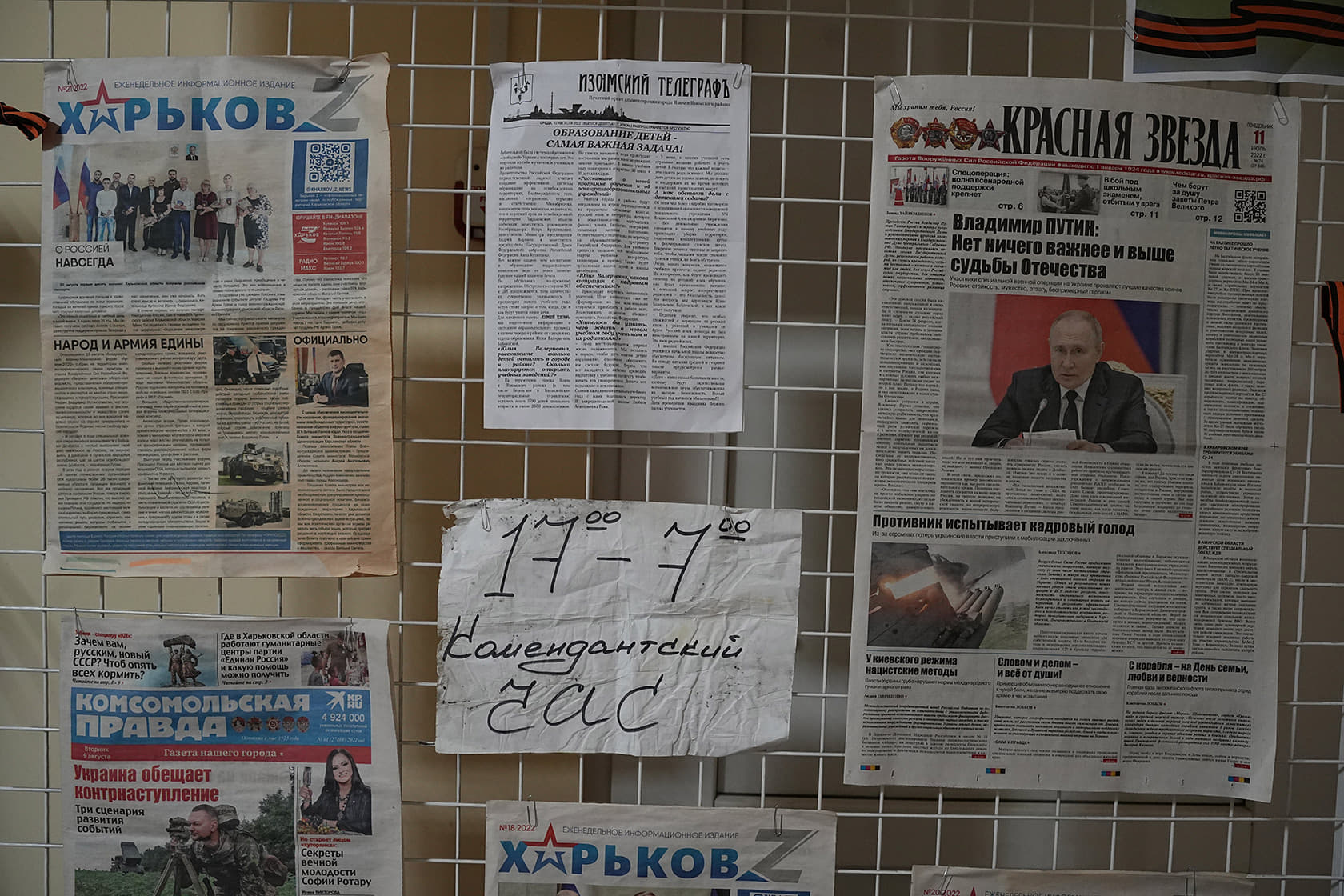 Newspapers peddling Russian propaganda displayed at the Museum of the Occupation
Newspapers peddling Russian propaganda displayed at the Museum of the Occupation
"We have to preserve the evidence that Russian forces were here. A year, or five years, from now they will say: 'We were never there.' But then whose T-shirt is this?" Harahulia says. A T-shirt displayed on the wall reads: "Russian Engineer Troops".
Still, Izium is not all-consumed by its residents' painful memories. Over the past six months, it has increasingly come to life, barista Oksana says. New pizza and sushi places, cafes and shops have opened up.
Oksana says that the young people who remained in Izium want to have somewhere to go to relax and socialise. When I went to Kharkiv, I found out that Kharkiv residents had brought a projector for Izium and flyers (advertising the fundraising campaign). "There will be film screenings in Izium soon!" beams Oksana. Kristina Berdynskyh for the Ukrainian School of Political Studies and Ukrainska Pravda
Translation: Tetiana Buchkovska and Olya Loza Editing: Shoel Stadlen Photography: Yevhen Hertner
The writing of this piece was made possible with the support off the Partnership Fund for a Resilient Ukraine (PFRU)